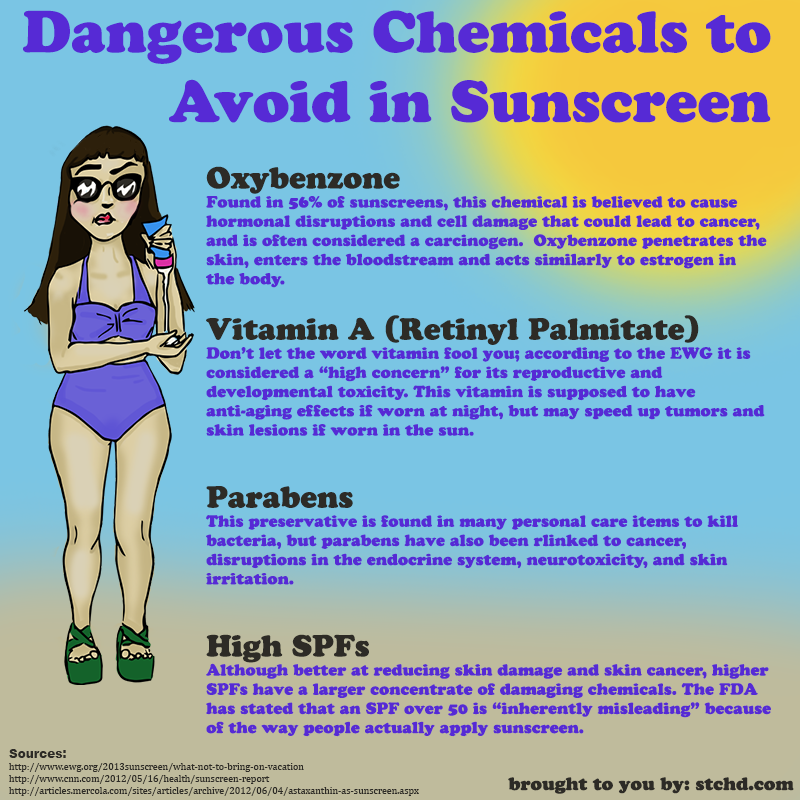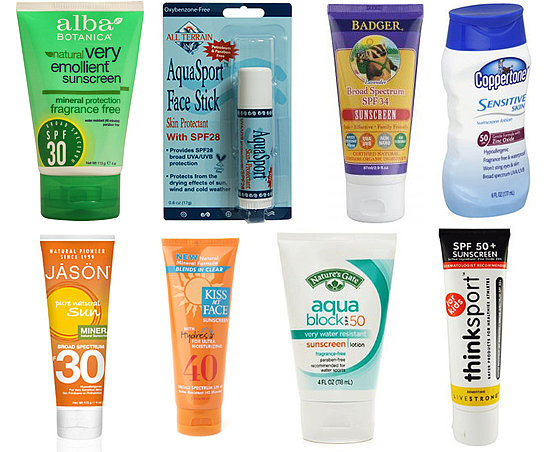Summer is here, you probably have your beach swag all ready to go: swimwear, sunglasses, towel, beach bag, a flask–the essentials. Before you grab the sunscreen though, have you looked at the label? Almost one-fourth of sunscreens contain harmful ingredients, many of which can cause–drum-roll please–cancer. So, while you’re putting sunscreen on to avoid skin cancer and burns, you’re risking cancer by putting on some sunscreens. Where is the logic here? The dangerous chemicals in sunscreen come in many forms:

Gross! Although the FDA has approved all these icky ingredients as safe for topical usage, the Environmental Working Group (EWG) thinks otherwise. Some of their research has indicated that Oxybenzone can be absorbed into the skin, and 18% of Retinyl Palmitate can be absorbed in 30 hours.
Unfortunately, mineral sunscreens that do not contain these chemicals are not completely off the hook. The nano-sized zinc-oxide or titanium-dioxide particles are so small that they are believed to be absorbed into the skin, but the research is still ongoing. The studies thus far though, seem to agree that mineral sunscreen does not penetrate the bloodstream, and is therefore considered safer and more effective than chemical sunscreen.
Avoid using powder, towelette, or tanning oil sunscreens as a rule of thumb–they won’t provide you with any real coverage, the oil pretty much just makes you shiny. Spray sunscreens are also a bad idea, because of the risk of inhaling it, plus it’s much easier to miss a spot.
So what is the safest kind of sunscreen? It’s tough to say, but from the looks of it, the mineral sunscreens are best. Make sure that if you wear sun lotion, it protects against both UVA and UVB rays, too since SPF only protects against UVB. Follow the guidelines on your tube, and make sure to really slather it on, and remember to reapply it every so often.
Check out some of these brands which are listed as some of the safest and don’t have many of the dangerous ingredients in sunscreen, according to the EWG (note: Coppertone does contain parabens).
-zinc oxide or titanium dioxide based
-SPF range of 15-50
-Unscented or naturally scented with things like essential oils
-non-nano
-lotion-based
-water resistant

